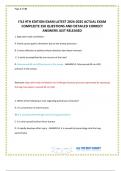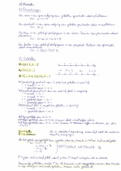Examen
ITLS 9TH EDITION EXAM LATEST ACTUAL EXAM COMPLEETE 250 QUESTIONS AND DETAILED CORRECT ANSWERS JUST RELEASED.
- Cours
- Établissement
ITLS 9TH EDITION EXAM LATEST ACTUAL EXAM COMPLEETE 250 QUESTIONS AND DETAILED CORRECT ANSWERS JUST RELEASED.
[Montrer plus]




